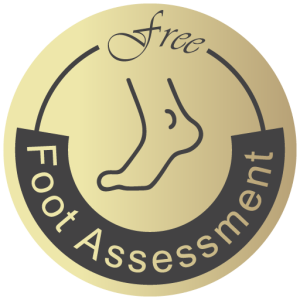



Walking is a wonderful activity for getting some physical activity, and it doesn’t have to be particularly strenuous. But there are moments where you might feel like you can’t go on. Luckily, there are steps to help you out when walking just isn’t worth it!
The root cause for suffering from walking has to do with imbalanced pressure on your feet which causes pain in joints all over your body, whether in your feet, knees, back, or other joints. Conversely pain in your joints will be escalated when you start walking. Such issues must be resolved as they could only escalate without remedy.
Following are the top 10 conditions that make walking unbearable:
Severe obesity is a condition that makes walking unbearable for many people. It is often caused by a combination of factors, including genetics, lifestyle, and health conditions.
Severe obesity can make it difficult to walk, even short distances. The extra weight can put strain on your joints and muscles, making it hard to move around. In some cases, severe obesity can also lead to heart and respiratory problems, which can make walking even more difficult.
If you are struggling with severe obesity, there are treatments available that can help. Talk to your doctor about your options, including diet, exercise, and medication. With the right treatment plan, you can improve your health and quality of life.
Arthritis is a condition that causes pain and inflammation in the joints, and it can make even simple activities like walking very painful. If you have arthritis, you may be limited in how far you can walk, and you may need to use assistive devices like canes or walkers to help you get around. There are many different types of arthritis, and treatment options vary depending on the type of arthritis you have. If you have arthritis, talk to your doctor about ways to manage your pain and keep moving.
Rheumatoid arthritis is a form of arthritis that affects the joints. It is a chronic, inflammatory disorder that can cause pain, stiffness, and swelling in the joints. The symptoms of rheumatoid arthritis can make walking unbearable.
The pain of rheumatoid arthritis can be severe and constant. It can make it difficult to walk even short distances. The stiffness and swelling in the joints can also make it difficult to walk. Walking can be especially difficult when the weather is cold or wet.
People with rheumatoid arthritis may need to use assistive devices such as canes or walkers to help them get around. Some people may need to use a wheelchair for long distances. Rheumatoid arthritis can also make it difficult to climb stairs or get in and out of cars.
Treatment for rheumatoid arthritis can help relieve the pain and stiffness, and improve joint function. If you have rheumatoid arthritis, talk to your doctor about ways to manage your symptoms and improve your quality of life.
Patellofemoral Pain Syndrome, also known as “runner’s knee,” is a condition that causes pain around the kneecap. The pain is often worse when walking down stairs or hills, and can make it difficult to walk for long periods of time.
There are several possible causes of patellofemoral pain syndrome, including overuse, injury, arthritis, and tight muscles. Treatment typically includes rest, ice, and physical therapy. In some cases, surgery may be necessary to correct the underlying problem.
The plantar fascia is a band of tissue that runs along the bottom of the foot from the heel to the toes. When this tissue becomes inflamed, it can cause severe pain in the heel and arch of the foot. Plantar fasciitis is often caused by overuse, such as running or standing for long periods of time. Treatment for plantar fasciitis includes rest, ice, and stretching exercises. In severe cases, surgery may be necessary to release the tension in the plantar fascia.
Hyperlordosis is a condition characterized by an excessive curve in the lower back. This can lead to pain and difficulty when walking, as well as other problems such as herniated discs.
There are several possible causes of hyperlordosis, including genetic factors, poor posture, obesity, and pregnancy. Treatment typically involves improving posture and strengthening the muscles in the back and core. In severe cases, surgery may be necessary to correct the problem.
It is characterized by pain in the metatarsal region of the foot, which is the area between the arch of the foot and the toes. The pain is often worse with activity and can make it difficult to walk or stand for long periods of time. Metatarsalgia is often caused by overuse or injury to the metatarsal region, but it can also be caused by conditions such as arthritis or diabetes. Treatment for metatarsalgia typically includes rest, ice, and over-the-counter pain relievers. In more severe cases, physical therapy or surgery may be necessary.
Morton’s Neuroma or Morton Foot Syndrome is a condition that results in the compression of the nerves between the third and fourth toes. This can cause pain, tingling, numbness, and burning in the affected area. The condition is often caused by wearing tight shoes or high heels. Treatment for Morton’s Neuroma https://www.lifebalance.ae/footcare/accessories/ typically involves wearing wider shoes, using pads or orthotics to relieve pressure on the nerve, and avoiding activities that aggravate the condition. In some cases, surgery may be necessary to remove the Morton’s Neuroma.
Achilles tendonitis is a condition that causes inflammation of the Achilles tendon, the large band of tissue that connects the calf muscles to the heel bone. Achilles tendonitis often occurs as a result of overuse, such as from running or playing sports. It can also be caused by an injury or infection.
Symptoms of Achilles tendonitis include pain and stiffness in the back of the leg, difficulty walking, and swelling. Treatment typically involves rest, ice, and physical therapy. Surgery may be necessary in severe cases.
Another condition that can make walking unbearable is if you have a wound that won’t heal. This can be extremely painful and make it difficult to walk without putting pressure on the wound. Wounds that won’t heal are often caused by diabetes or other medical conditions.
Also, an infection in your foot or leg. This can cause extreme pain and make it difficult to walk. Infections often occur after injuries or surgeries, so it’s important to keep an eye on any wounds you may have.
Yes. When you have a customized insole or inserts, it will redistribute your weight, thus minimizing uneven pressure on your feet and your joints. Further, these insoles or inserts shall train your foot muscles and help support your arch. It is expected with all factors equal that in time, you’ll feel less pain in your feet and can walk longer distances.
We hope you found this article helpful in understanding some of the conditions that can make walking unbearable. If you or someone you know is struggling with any of these conditions, we encourage you to seek medical help. Walking should be an enjoyable experience, and we want to ensure that everyone has the opportunity to enjoy it.

